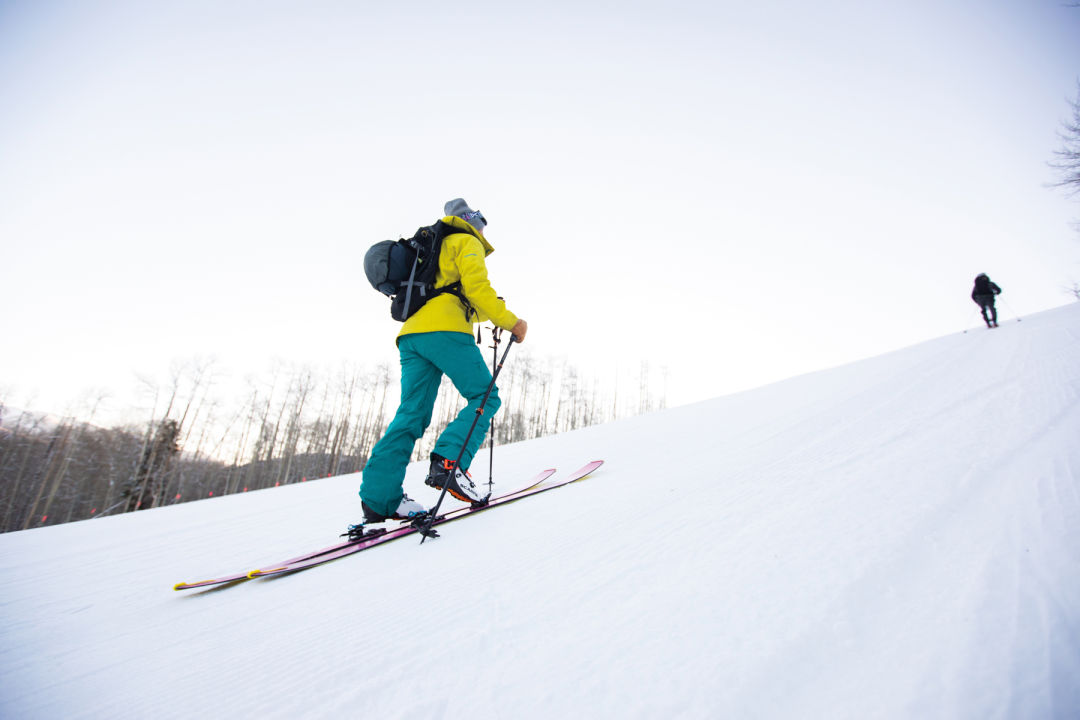If Your Downhill Plans Have Been Dashed, Head Uphill Instead

Image: Zach Mahone
By all accounts (admittedly, mostly this writer’s personal experience), Vail Resorts’ new winter reservation system seems to work pretty well. However, there are bound to be days—e.g., weekend powder days—when you won’t be able to score a reservation at Vail or Beaver Creek.
It’s a good thing, then, that local alternatives abound to lift-served skiing and snowboarding. Some of them—such as in-resort uphill skinning and backcountry ski touring—allow you to get a workout in while you earn your turns in a completely different way. Here’s what you need to know before heading out.
Yes, you can get to the top of Vail or Beaver Creek without riding a gondola or a chairlift, but you’ll have to do it when the lifts aren’t running (early mornings or evenings) and your friendly Ski Patrollers aren’t there to protect you. Familiarize yourself with the resorts’ Uphill Access policies (Vail: vail.com; Beaver Creek: beavercreek.com), always call the Trails Hotline before heading out (Vail: 970-754-1023; Beaver Creek: 970-754-5907), and make sure you have a way to summon help should you need it (Vail Mountain Rescue Group responds to after-hours 911 calls and texts).
You will also need some specialized equipment: alpine touring (AT) skis with specialized bindings that allow you to free your heel while hiking uphill, as well as boots designed to flex with every step while in “walk” mode. (You then lock boots and bindings into downhill mode to ski down, just as you would with conventional alpine gear.) You’ll also need climbing skins—sticky-back fabric strips that attach to the bottom of your skis, allowing you to grip the snow. Snowboarders can use a split-board system that offers the same functionality. Locally, Alpine Quest sports in Edwards (alpinequestsports.com) rents AT gear packages for $95/day or $85/day for a splitboard, without boots.
It’s expected to be a busy winter in the backcountry, which leads to concerns about overcrowding and safety. In an open letter to the outdoors industry and “those who recreate on snow,” Todd Walton, executive director of the Winter Wildlands Alliance, wrote: “Once BC gear started to fly off of shelves back in March, we began seeing bigger crowds at all of our favorite backcountry trailheads, parking lots, and access points.” He continued to say that this “whole new crop of first-timers with little or no snow-safety experience” could increase avalanche risk and fatalities.
Don’t be one of those. If you want to leave the resort, get some instruction first—or better yet, go with a pro. Local outfitter Paragon Guides (paragonguides.com) offers private day trips for all levels, as well as scheduled group tours and avalanche safety courses. Although Avon retailer Cripple Creek Backcountry (cripplecreekbc.com) won’t be running its popular moonlight skinning events this winter, that outfitter will be open for business and offers a trove of backcountry expertise and classes along with specialized touring equipment for sale.
In addition to avalanche awareness, it’s crucial for anyone heading into the backcountry to know and practice basic etiquette, which helps to protect the pristine environment as well as the peace and safety of others. Due to the surge of interest in human-powered skiing and snowboarding, a consortium of backcountry-related groups, including the Winter Wildlands Alliance and the Colorado Mountain Club, has created Ski Kind: The Backcountry Responsibility Code (skikind.org), which encourages people to be aware, leave no trace, and be respectful of others. Earn your turns this winter—just be smart, safe, and considerate when you do.






































